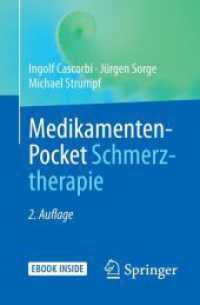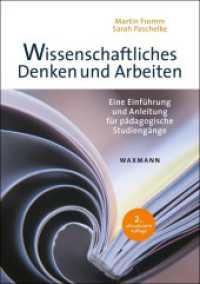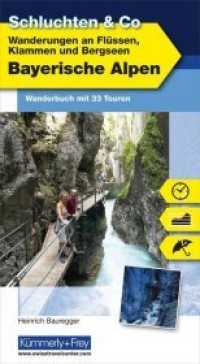Full Description
The 39-volume set, comprising the LNCS books 13661 until 13699, constitutes the refereed proceedings of the 17th European Conference on Computer Vision, ECCV 2022, held in Tel Aviv, Israel, during October 23-27, 2022.
The 1645 papers presented in these proceedings were carefully reviewed and selected from a total of 5804 submissions. The papers deal with topics such as computer vision; machine learning; deep neural networks; reinforcement learning; object recognition; image classification; image processing; object detection; semantic segmentation; human pose estimation; 3d reconstruction; stereo vision; computational photography; neural networks; image coding; image reconstruction; object recognition; motion estimation.
Contents
GOCA: Guided Online Cluster Assignment for Self-Supervised VideoRepresentation Learning.- Constrained Mean Shift Using Distant Yet Related Neighbors for Representation Learning.- Revisiting the Critical Factors of Augmentation-Invariant Representation Learning.- CA-SSL: Class-Agnostic Semi-Supervised Learning for Detection and Segmentation.- Dual Adaptive Transformations for Weakly Supervised Point Cloud Segmentation.- Semantic-Aware Fine-Grained Correspondence.- Self-Supervised Classification Network.- Data Invariants to Understand Unsupervised Out-of-Distribution Detection.- Domain Invariant Masked Autoencoders for Self-Supervised Learning from Multi-Domains.- Semi-Supervised Object Detection via Virtual Category Learning.- Completely Self-Supervised Crowd Counting via Distribution Matching.- Coarse-to-Fine Incremental Few-Shot Learning.- Learning Unbiased Transferability for Domain Adaptation by Uncertainty Modeling.- Learn2Augment: Learning to Composite Videos for Data Augmentation in Action Recognition.- CYBORGS: Contrastively Bootstrapping Object Representations by Grounding in Segmentation.- PSS: Progressive Sample Selection for Open-World Visual Representation Learning.- Improving Self-Supervised Lightweight Model Learning via Hard-Aware Metric Distillation.- Object Discovery via Contrastive Learning for Weakly Supervised Object Detection.- Stochastic Consensus: Enhancing Semi-Supervised Learning with Consistency of Stochastic Classifiers.- DiffuseMorph: Unsupervised Deformable Image Registration Using Diffusion Model.- Semi-Leak: Membership Inference Attacks against Semi-Supervised Learning.- OpenLDN: Learning to Discover Novel Classes for Open-World Semi-Supervised Learning.- Embedding Contrastive Unsupervised Features to Cluster in- and Out-of-Distribution Noise in Corrupted Image Datasets.- Unsupervised Few-Shot Image Classification by Learning Features into Clustering Space.- Towards Realistic Semi-Supervised Learning.- Masked Siamese Networks for Label-Efficient Learning.- Natural Synthetic Anomalies for Self-Supervised Anomaly Detection and Localization.- Understanding Collapse in Non-Contrastive Siamese Representation Learning.- Federated Self-Supervised Learning for Video Understanding.- Towards Efficient and Effective Self-Supervised Learning of Visual Representations.- DSR - A Dual Subspace Re-Projection Network for Surface Anomaly Detection.- PseudoAugment: Learning to Use Unlabeled Data for Data Augmentation in Point Clouds.- MVSTER: Epipolar Transformer for Efficient Multi-View Stereo.- RelPose: Predicting Probabilistic Relative Rotation for Single Objects in the Wild.- R2L: Distilling Neural Radiance Field to Neural Light Field for Efficient Novel View Synthesis.- KD-MVS: Knowledge Distillation Based Self-Supervised Learning for Multi-View Stereo.- SALVe: Semantic Alignment Verification for Floorplan Reconstruction from Sparse Panoramas.- RC-MVSNet: Unsupervised Multi-View Stereo with Neural Rendering.- Box2Mask: Weakly Supervised 3D Semantic Instance Segmentation Using Bounding Boxes.- NeILF: Neural Incident Light Field for Physically-Based Material Estimation.- ARF: Artistic Radiance Fields.- Multiview Stereo with Cascaded Epipolar RAFT.








